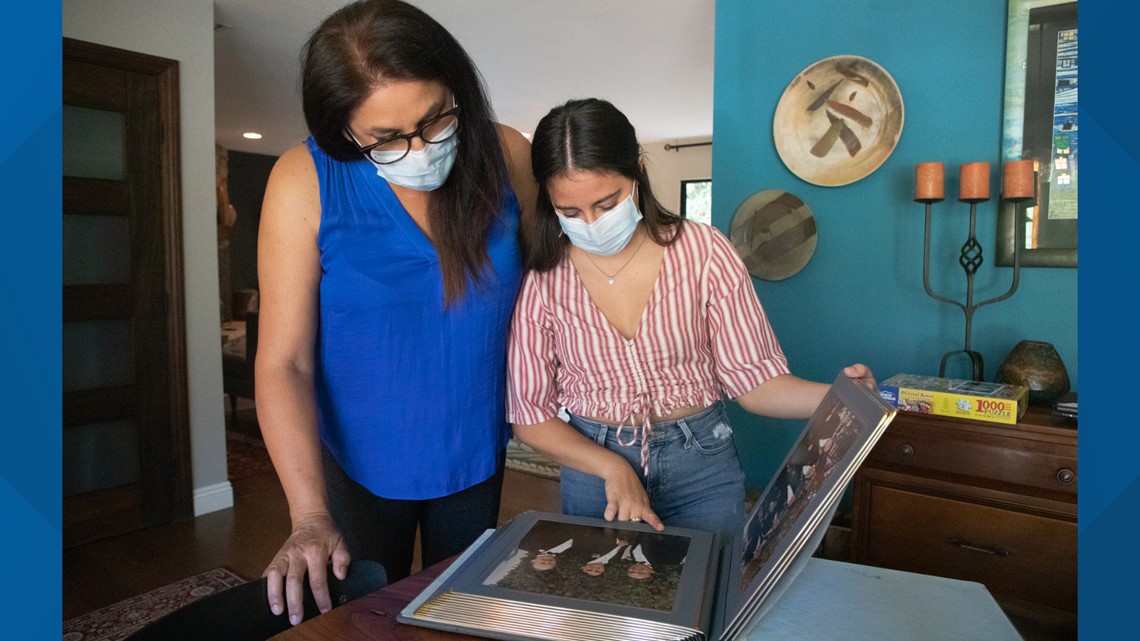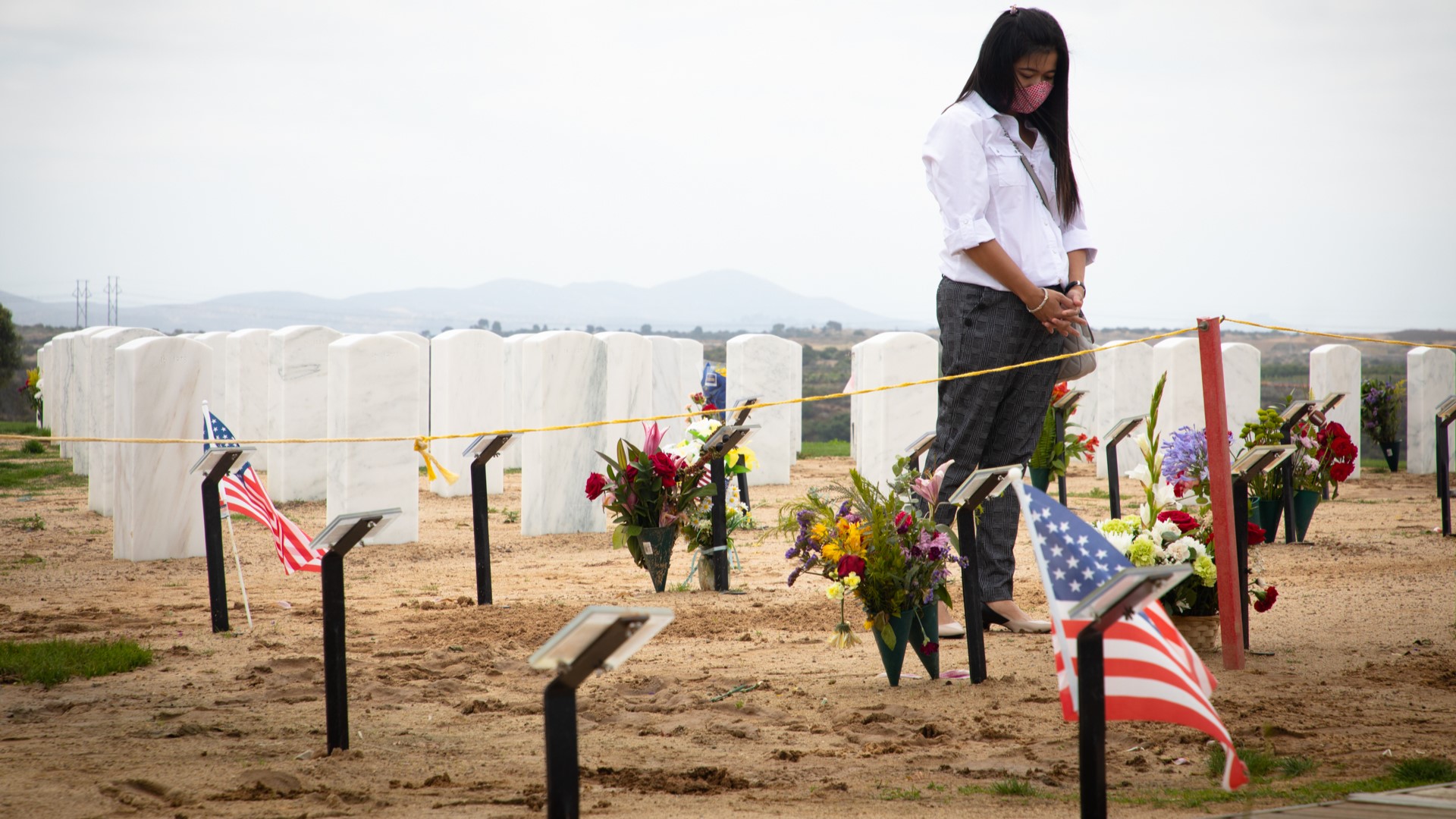SAN DIEGO — We all know this hasn’t been an easy year.
When San Diego County first imposed stay-at-home orders in March, officials said they hoped the region would return to some semblance of normalcy within a few weeks. Nine months later, now on our second lockdown order, COVID-19 cases and deaths are skyrocketing.
Join inewsource for a FREE Discussion on Jan 14: Facing the pandemic in 2021: Lessons learned and tips for the year ahead
Currently, 0% of Southern California’s ICU beds are available as more people are hospitalized with the virus. Already, more than 1,200 county residents have died from COVID-19.
Underneath the hospitalization rates and death statistics are people who have suffered, sacrificed, lost lives and lost loved ones. At inewsource, we’ve spent the past nine months bringing you the stories that show the human toll COVID-19 has taken on our communities.
We recently caught up with some of the families who lost relatives and friends this year — families that generously opened their homes and their hearts to our reporters and told us their stories. In a holiday season like no other in recent memory, they told us they are still looking for ways to cope and celebrate the people they lost to the coronavirus.
“We’ve been literally torn apart from each other, and just waiting, waiting, waiting for a time when we can be together,” said Vicki Sutherland, who lost her father, Joe Villegas, and aunt, Mona Weiss, to COVID-19.
Sutherland, who spoke with us for a story on challenges with COVID-19 treatment and testing in July, hasn’t seen her extended family since the deaths occurred. She’s holding onto her father’s ashes and hopes to plan a memorial service sometime in 2021.


“That’s almost the harder part, not being able to grieve and celebrate life,” she said.
As a part of our July story, five families shared what happened leading up to their relatives’ deaths and how those deaths may have been avoidable. We followed up with another project in September, exploring the fears and other obstacles that prevented COVID-19 victims from seeking potentially life-saving medical care.
After that, we reported on the other deaths caused by the pandemic — the people who never contracted COVID-19 but are considered “indirect” victims of the virus: the mother of a 22-year-old who suffered a drug overdose, the brother of a heart attack victim and the daughter of a polio survivor. Each one told us how the pandemic changed their loved ones’ lives, mental states and workout routines, ultimately leading to their deaths.
One thing connects all the families we spoke with for our pandemic stories this year: They are still grappling with the unexpected losses of cherished family members.
For Sutherland, one thing that has helped her stay positive was building an altar for her father on the Day of the Dead. It helped her connect with her Hispanic and Mexican heritage, she said, and the family found it very therapeutic.
But Thanksgiving was more challenging. Usually, about 20 of her relatives would get together to laugh, eat and drink, but this year she stayed home with her husband and daughter.
One of the lessons she told us she’s learned through all this is “how important family is to me.”
“I cannot wait to get a hold of these people and give them a hug and a kiss,” Sutherland said.
Our reporting this year has explored just how difficult isolation caused by the pandemic has been. Assisted living facilities and nursing homes have banned visitors during most of the pandemic to keep residents safe. But experts say family members are the best advocates for the residents to ensure they’re receiving proper care, and things can go seriously wrong when they’re not present.
Even with visitor bans, the virus has crippled San Diego County’s long-term care facilities. More than 1,600 healthcare workers and 1,900 patients have contracted COVID-19 at the county’s nursing homes.
At one assisted living home in Chula Vista, five of six residents tested positive for the virus and three died in the first three months of the pandemic.


Rebecca Niebla’s grandmother died of COVID-19 at Windsor Gardens, a National City nursing home. We spoke with her in July about how staffing shortages left these facilities unprepared to tackle the pandemic.
She couldn’t visit her grandmother, Esther Hernandez, in the weeks leading up to her death. At the time, Niebla said the nursing home didn’t take the right precautions and believed the facility could have prevented her grandmother from catching the virus.
Now, she’s trying to put those thoughts behind her.
“It wasn’t healthy for us to keep digging and finding out the details,” she said. “It was better for us to let go and start healing.”
Niebla and her 6-year-old son moved in with her mother to support each other during the pandemic. Together, they help each other remember all the wonderful things about Esther.
“She had a full life,” her granddaughter said. “She was very healthy. She loved her family. So we just have to move on with our lives and continue with her legacy.”
Next year, inewsource will continue to bring you the human stories of the pandemic. If you have something you want to share with us, email us at covid@inewsource.org.

